Foreign Countries Aim to Poach America’s Best and Brightest
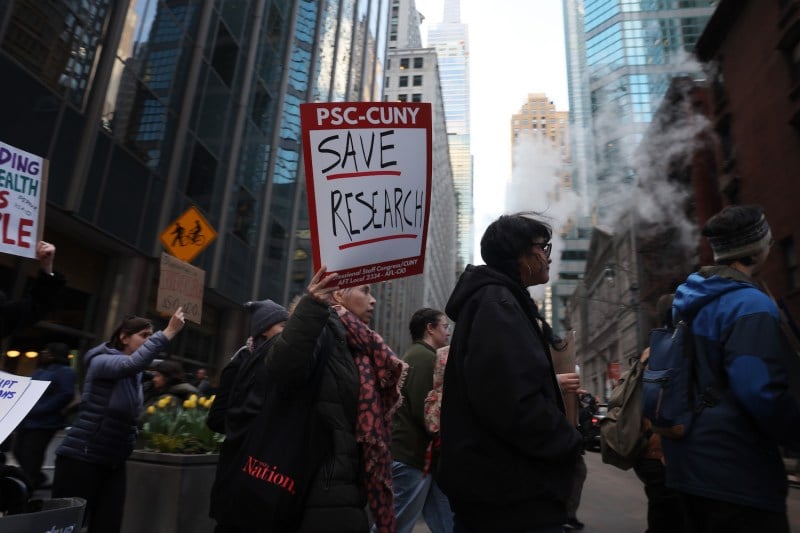
Foreign Countries Aim to Poach America’s Best and Brightest
As Trump cracks down on U.S. universities and international students, governments see an opportunity.
Protesters rally in Manhattan to demand an end to cuts in science, research, education, and other areas by the Trump administration, seen in New York City on April 8. Spencer Platt/Getty Images
The Trump administration’s crusade against top U.S. universities and some international students has created chaos in American academia—and an opening for countries who have long been eager to recruit top U.S. research talent.
Across the country, researchers are reeling from U.S. President Donald Trump’s sweeping effort to remake the higher education system by cutting or threatening to cut hundreds of millions of dollars of funding to top universities over so-called “woke” policies, such as initiatives to promote diversity, equity, and inclusion (DEI) and rules surrounding transgender athletes’ participation in sports.
The Trump administration’s crusade against top U.S. universities and some international students has created chaos in American academia—and an opening for countries who have long been eager to recruit top U.S. research talent.
Across the country, researchers are reeling from U.S. President Donald Trump’s sweeping effort to remake the higher education system by cutting or threatening to cut hundreds of millions of dollars of funding to top universities over so-called “woke” policies, such as initiatives to promote diversity, equity, and inclusion (DEI) and rules surrounding transgender athletes’ participation in sports.
Those pressures have only been compounded by the Trump administration’s extensive research funding cuts and immigration turmoil, fueling fears of a potential brain drain that could blunt Washington’s long-term scientific and technological ambitions.
Foreign powers see opportunity in the chaos. Eager to poach U.S.-based researchers and scientists, a growing number of world leaders are now pitching their countries as more stable—and supportive—alternatives to the United States.
Europe became the latest player to throw its hat into the ring last week, with European Commission chief Ursula von der Leyen pledging 500 million euros, or roughly $566 million, to transform Europe into “a magnet for researchers” over the next two years. She was joined by French President Emmanuel Macron, who announced a 100 million euro investment to attract new talent. His announcement comes just one month after Paris launched its “Choose France for Science” initiative, which aims to turn France into a “host country” for researchers “wishing to continue their work in Europe,” according to the French National Research Agency.
“We call on researchers worldwide to unite and join us,” Macron declared at the Sorbonne University in Paris last week. “If you love freedom, come and help us stay free.”
The French leader’s remarks included pointed jabs at the Trump administration’s policies. “Nobody could imagine a few years ago that one of the great democracies of the world would eliminate research programs on the pretext that the word ‘diversity’ appeared in its program,” Macron said. Von der Leyen, too, condemned what she called a “gigantic miscalculation,” without explicitly mentioning the United States.
Europe’s big push comes as top U.S. universities are confronting immense financial and political pressures, part of the Trump administration’s broader effort to bind hundreds of millions of dollars in federal funding to its own vision of higher education. The crackdown, which has embroiled universities such as Harvard, Columbia, and the University of Pennsylvania, has sparked widespread alarm over academic independence as well as a fierce legal battle between Harvard and the Trump administration.
An coalition of 13 U.S. universities, including research powerhouses such as the Massachusetts Institute of Technology and Princeton University, are also suing the Trump administration over its push for sharp funding cuts at the National Science Foundation (NSF), an agency that supports scientific research at academic institutions. The agency has had to cancel more than 1,000 active research grants, and the Trump administration is now mulling slashing the agency’s $9 billion budget by more than half.
The Trump administration’s dismantling of NSF sparked alarm among Democratic lawmakers, more than 100 of whom penned a letter to Trump last week to express their “deep concern” over the fate of the agency.
“The NSF has, for decades, been a cornerstone of American innovation, funding groundbreaking research that has led to advancements in medical imaging, artificial intelligence, geographic information systems, and numerous other fields,” the lawmakers said.
The lawmakers warned that the gutting of NSF could weaken Washington’s competitive edge. “In an era of intense global competition, particularly with nations like China investing heavily in science and technology, these actions risk ceding our leadership position and compromising our ability to address critical challenges,” the letter read.
It’s not just funding cuts that are complicating U.S.-based researchers’ calculus; there’s also the immigration uncertainty. In March, the Trump administration ramped up efforts to deport international students who expressed or were in some way tied to pro-Palestinian activism, citing an obscure legal provision that empowers U.S. Secretary of State Marco Rubio to deport noncitizens whom he believes pose a threat to U.S. national security. The Trump administration’s efforts have sparked a flurry of intense legal challenges.
The Trump administration had also revoked more than 1,500 student visas in a crackdown that appeared to impact students with minor legal infractions, such as traffic violations, as well as some whose cases had been dismissed. In some cases, there was not a clear reason for the revocation. Even though officials abruptly reversed course in many cases last month following fierce legal pushback, the moves have alarmed foreign-born researchers and academics.
If international students turn away from U.S. universities in growing numbers, experts warn that it would further strain universities’ bottom lines and hamper American scientific innovation.
“International students aren’t supplemental income; they’re essential scientific infrastructure for the United States,” said Chris Glass, an expert in higher education at Boston College.
Some U.S.-based researchers may already be seeking opportunities abroad. In March, the science journal Nature conducted a poll in which 75 percent of its respondents—more than 1,200 scientists—said they were considering leaving the United States, with Europe and Canada ranking among their top destinations. Out of nearly 700 postgraduate respondents, around 550 were mulling a similar route.
Europe’s pitch has been loud and clear. In March, 13 European research ministers from countries including Germany and France penned a letter to EU research commissioner Ekaterina Zaharieva, urging the bloc to “seize this historical moment” and welcome “brilliant talents from abroad who might suffer from research interference and ill-motivated and brutal funding cuts.”
More could soon come. Going forward, the continent should go bigger and bolder to fully take advantage of the Trump administration’s “monumental own goal,” Daniel B. Baer, the senior vice president for policy research at the Carnegie Endowment for International Peace, argued this week in Foreign Policy. That could include establishing a research investment fund to purchase U.S. research labs and fast-tracking a scheme that allows eligible participants temporary residency with permission to work.
“Yes, salaries are lower in Europe, but the quality of life is good, and social safety nets and accessible health care are part of the European offer,” Baer wrote. “Many people are likely to stay for the long run, becoming new Europeans who inject skills, entrepreneurialism, and diversity into the continent’s advanced democracies.”
Europe isn’t the only one making this play. Beijing has also ramped up efforts to recruit Chinese-born researchers back to the country, particularly in the realm of artificial intelligence, said Gaurav Khanna, a professor at the University of California San Diego. “They’re telling researchers: ‘This is where we want the next AI boom to be, and so come back,’” he said.
Beijing is now establishing dedicated recruitment programs to woo Chinese-born researchers who are mulling leaving the United States, the South China Morning Post reported on Thursday.
To drive that message home, Chinese state media has also seized on the confusion in Washington, with one Global Times article bearing the headline: “‘America First,’ science on the sidelines?”
“China, South Korea and Singapore are investing more in R&D [research and development] and building world-class research infrastructures. These countries may replace the US as a pole of global science and technology innovation in the future,” the article quoted Li Zheng, a research fellow at the China Institutes of Contemporary International Relations, as saying.
As U.S.-based researchers look elsewhere, the United States’ northern neighbor also appears to be welcoming them with open arms. Last month, the University Health Network (UHN) in Toronto and other foundations unveiled a 30 million Canadian dollar push (roughly $21.5 million) to recruit 100 early-career scientists from the United States and elsewhere.
“Some of the top scientists are looking for a new home right now, and we want UHN and Canada to seize this opportunity,” said Julie Quenneville, the president and CEO of the UHN Foundation, at a news conference.
Canada’s Manitoba province, too, is “rolling out the welcome mat” for U.S.-based researchers, doctors, and nurses who have been impacted by Trump’s funding cuts, Health Minister Uzoma Asagwara told the Canadian Broadcasting Corporation. It’s not just U.S.-based researchers who are turning to Ottawa, either; at least three prominent Yale professors have also left their U.S. posts for positions in Canada.
Still, for all of the uncertainty embroiling the sector, it’s not so easy to replace Washington’s research might, experts said. And with more than three more years to go in the second Trump administration, it remains unclear how exactly the landscape will change.
“At the end of the day, though, there is nothing else yet in the world like the U.S. higher education sector,” Khanna said. “It’s not the easiest thing to just lose the entirety of that advantage and that edge.”
This post is part of FP’s ongoing coverage of the Trump administration. Follow along here.
Christina Lu is an energy and environment reporter at Foreign Policy. Bluesky: @christinalu.bsky.social X: @christinafei
More from Foreign Policy
-

Indian Air Force personnel stand in front of a Rafale fighter jet during a military aviation exhibition at the Yelahanka Air Force Station in Bengaluru. A Tale of Four Fighter Jets
The aircraft India and Pakistan use to strike each other tell a story of key geopolitical shifts.
-

A cardinal in a black robe with red sash with hands folded in front of him walks past a stage and steps. Conclave Sends Message With American Pope
Some cardinals had been agitating for U.S. leadership to counter Trump.
-

An illustration shows red tape lines crossing over and entrapping a semiconductor chip. Is It Too Late to Slow China’s AI Development?
The U.S. has been trying to keep its technological lead through export restrictions, but China is closing the gap.
-

A man watches a news program about Chinese military drills surrounding Taiwan, on a giant screen outside a shopping mall in Beijing on Oct. 14, 2024. The Pentagon Fixates on War Over Taiwan
While U.S. military leaders fret about China, Trump has dismissed the Asia-Pacific.

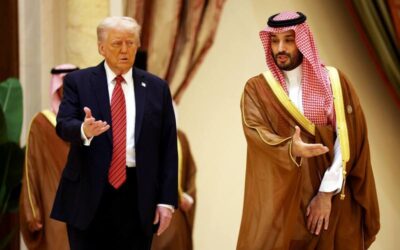
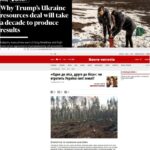

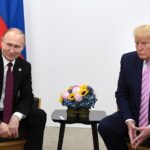



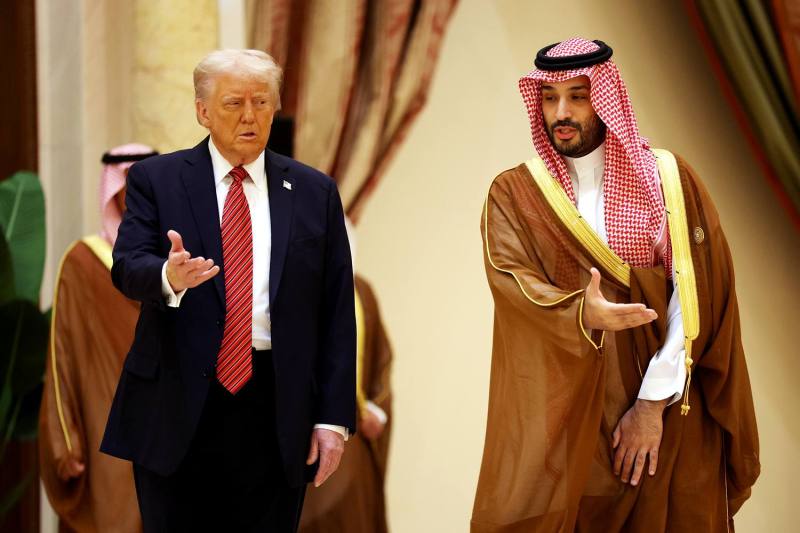



Join the Conversation
Commenting on this and other recent articles is just one benefit of a Foreign Policy subscription.
Already a subscriber?
.
Subscribe
Subscribe
View Comments
Join the Conversation
Join the conversation on this and other recent Foreign Policy articles when you subscribe now.
Subscribe
Subscribe
Not your account?
View Comments
Join the Conversation
Please follow our comment guidelines, stay on topic, and be civil, courteous, and respectful of others’ beliefs.
Change your username |
Log out
Change your username:
CANCEL
Confirm your username to get started.
The default username below has been generated using the first name and last initial on your FP subscriber account. Usernames may be updated at any time and must not contain inappropriate or offensive language.